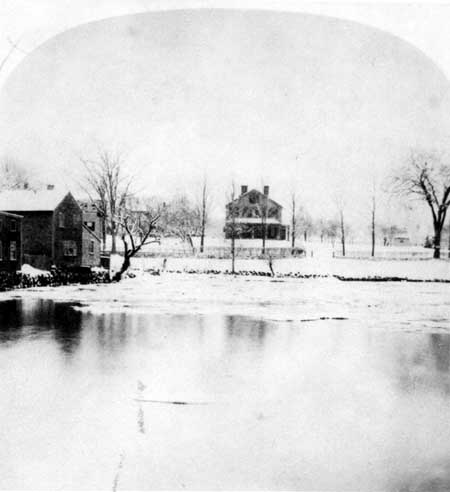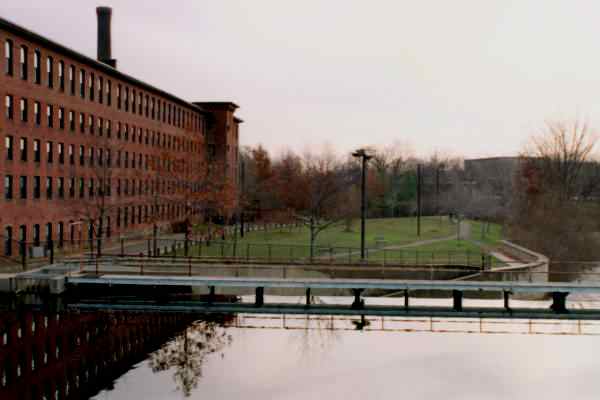Mills and Dams:
|
| As we have seen, the Charles River served vital functions in the economic life of Native Americans. So too, Europeans in Massachusetts relied on the Charles to support their livelihoods. From the earliest settlers, to the momentous days of the industrial revolution in the nineteenth century, the Charles River drove the economic development of Massachusetts and New England. Early Mills and DamsThe textile mills along the Merrimack River in Lowell, Massachusetts are widely heralded for beginning American industrialization. Yet they were not the first American mills, nor even the first textile mills. Before Francis Cabot Lowell founded the town that carries his name, he set up a similar factory in Waltham, along the Charles River. But even this was not the first commercial use of the Charles. Some of the first settlers to the Boston area built mills along the Charles. There were two major types: grist mills to process grain, and saw mills to cut lumber. As early as 1634, Thomas Mayhew built a grist mill at Watertown, believed to be the first in the colony. The photograph below, from the Watertown Free Public Library shows a view of the site of this old mill from the Galen Street Bridge. The two-story building on the left was the barn of the original 1634 grist mill.
A quick search of the world wide web reveals that mills played a role in the colonial economic history of nearly every town along the Charles River. Here are just a few references to mills in Needham, Medway and Boston.
The Industrial Revolution on the CharlesThe Slater Mill, on the Blackstone River in Pawtucket, RI, was the first American power-operated spinning mill when founded, in 1793. Textile mills soon followed along the Charles River. The Charles River Museum of Industry, located in the old buildings of the Boston Manufacturing Company in Waltham and immediately adjacent to the Moody Street Dam (pictured below), tells some of this story of the rise of New England textile factories.
Web Links on Mills and the Industrial Revolution in New EnglandThe Slater Mill in Pawtucket, RI:
The Boston Manufacturing Company in Waltham, MA:
The Charles River's influence on the mills of Lowell, MA: |

